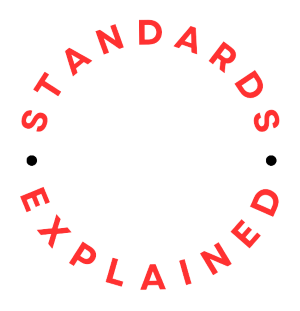An external audit of an organization claiming conformity with an international standard serves several purposes, including providing independent verification of compliance, ensuring credibility and trustworthiness, and maintaining certification or regulatory compliance.
The steps involved in an external audit typically include the following.
Audit Planning
- The external auditor conducts an initial review of the organization’s management system documentation, processes, and procedures to understand the scope of the audit.
- Audit planning involves determining the audit objectives, scope, criteria, and methodologies, as well as identifying key contacts within the organization.
Opening Meeting
- The external auditor holds an opening meeting with representatives from the organization to introduce the audit team, confirm the audit objectives and scope, and discuss the audit process, schedule, and logistics.
Document Review
- The external auditor reviews documentation related to the organization’s management system, including policies, procedures, records, and other relevant documentation.
- Document review helps the auditor gain an understanding of how the organization implements and maintains its management system in accordance with the requirements of the international standard.
On-site Audit Activities
- The external auditor conducts on-site audit activities, which may include interviews with personnel, observation of processes, and review of records and documentation.
- Audit activities are focused on verifying compliance with the requirements of the international standard, identifying strengths and weaknesses in the management system, and assessing the effectiveness of processes and controls.

Data Collection and Evidence Gathering
- The external auditor collects data and evidence to support audit findings, including documentation, records, and observations.
- Evidence gathering involves assessing the adequacy, accuracy, and reliability of information to determine compliance with standard requirements.
Audit Findings and Conclusions
- Based on the results of audit activities and evidence collected, the external auditor identifies audit findings related to compliance with the international standard.
- Audit findings may include observations, nonconformities, opportunities for improvement, and areas of strength within the organization’s management system.
Closing Meeting
- The external auditor holds a closing meeting with representatives from the organization to discuss audit findings, conclusions, and next steps.
- The closing meeting provides an opportunity for the organization to seek clarification on audit findings, provide additional information, and discuss corrective actions or improvement opportunities.
Audit Report Preparation
- The external auditor prepares an audit report documenting the audit findings, conclusions, and recommendations.
- The audit report typically includes a summary of audit activities, description of audit findings, identification of nonconformities, observations, and opportunities for improvement, as well as recommendations for corrective actions or follow-up activities.
Review and Approval of Audit Report
- The audit report is reviewed and approved by the external auditor’s organization or certification body before it is provided to the organization being audited.
- The audit report may undergo internal review and validation to ensure accuracy, completeness, and compliance with audit standards and requirements.
Follow-up and Corrective Actions
- The organization being audited is responsible for addressing any nonconformities identified during the external audit and implementing corrective actions as necessary.
- The external auditor may conduct follow-up activities to verify the effectiveness of corrective actions and ensure that nonconformities have been adequately addressed.
Certification or Compliance Decision
- Based on the results of the external audit and the organization’s response to audit findings, the external auditor’s organization or certification body makes a certification or compliance decision.
- Certification or compliance decisions may result in the issuance, maintenance, suspension, or withdrawal of certification, depending on the organization’s conformity with the international standard and the effectiveness of its management system.
In conclusion
The purpose of an external audit of an organization claiming conformity with an international standard is to provide independent verification of compliance, ensure credibility and trustworthiness, and support certification or regulatory compliance requirements. The steps involved in an external audit are designed to assess the organization’s management system, identify areas for improvement, and verify compliance with standard requirements in a systematic and objective manner.
